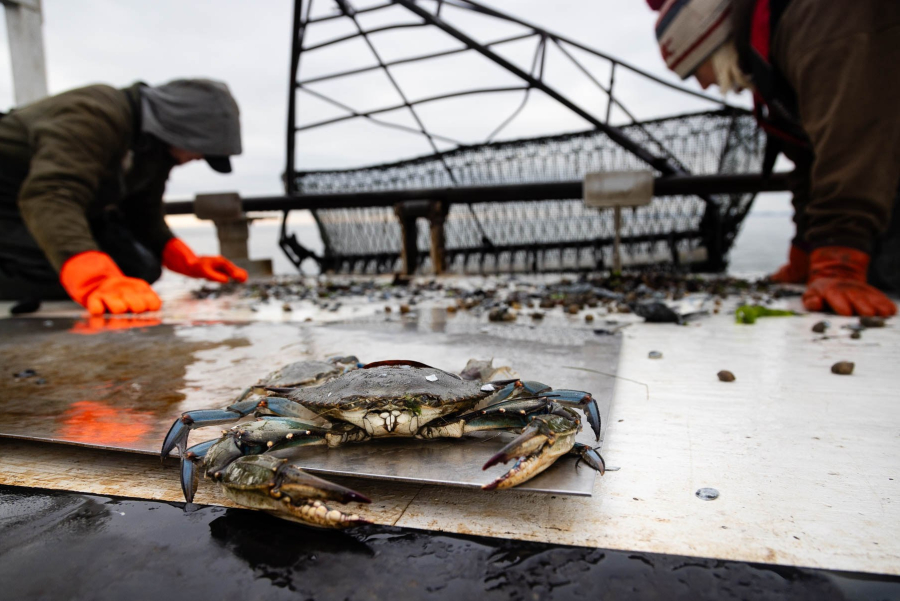Annual blue crab report highlights need to maintain focus on female, juvenile blue crabs
Overall population holds steady; population of juveniles grows slightly but remains low

Not much has changed dramatically for the Bay’s blue crabs since last year’s Blue Crab Advisory Report was released, say Chesapeake Bay scientists. The 2024 Blue Crab Advisory Report, just released by the Chesapeake Bay Stock Assessment Committee, notes that while the population of juvenile crabs increased to 138 million from last year’s 116 million, the overall population dropped slightly from 323 million to 317 million.
Population numbers in the report come from the Winter Dredge Survey, which is conducted by Maryland and Virginia. The increase in the juvenile population is a positive step, but it is still at one of the lowest levels seen since the Winter Dredge Survey began in 1990.
Scientists who develop the Blue Crab Advisory Report also look at the previous year’s harvest data to analyze whether the harvest level leaves enough females in the Bay to help produce more juveniles, thus fueling the population. In 2023, roughly 25% of the female population was removed by fishing. This is below both the target (desired level) of 28% and the threshold (level at which action is needed) of 37%.
The adult female blue crab population is estimated to be 133 million. That’s above the threshold of 72.5 million—but also below the target of 196 million.
With that in mind, the Blue Crab Advisory Report recommends that the blue crab resource managers and decision makers in Maryland, Virginia and the Potomac River continue the precautionary measures they have implemented in recent years that focus on protecting enough mature females and juveniles to maintain a healthy spawning stock. The report also suggests the jurisdictions keep an eye on the male population as well. This is because the percent of the male population that has been harvested has exceeded 34% (the “conservation trigger level”) several times in recent years.
"The Blue Crab Advisory Report provides science-based management recommendations from the leading blue crab scientists in the Chesapeake Bay region," said Ingrid Braun-Ricks, chair of the Chesapeake Bay Stock Assessment Committee, and chief of Fisheries Science and Administrative Officer at the Potomac River Fisheries Commission. "This year's report shows the blue crab stock remaining healthy compared to the established reference points, but also raises concern for the relatively low recruitment numbers in recent years. It underscores the importance of the upcoming stock assessment, as it may recommend a new framework for management and improve our understanding of the disconnect between continued low recruitment and what the previous assessment expected."
The Chesapeake Bay Stock Assessment Committee is a workgroup of the Chesapeake Bay Program’s Sustainable Fisheries Goal Implementation Team.
In progress: A new benchmark stock assessment
While the annual Winter Dredge Survey provides a solid snapshot of the blue crab population, from time to time, scientists need a deeper dive into blue crab numbers. This deeper dive—and reexamining the numbers that guide blue crab management—is called a benchmark stock assessment. Stock assessments are significant undertakings that are not done every year. They are developed by scientists and then undergo a rigorous peer review process.
The most recent stock assessment done for the Chesapeake Bay blue crab population was in 2011. A new stock assessment will let scientists reevaluate the thresholds and targets around which resource managers develop regulations for commercial and recreational harvest. A new stock assessment can also incorporate new data and alternative models used to assess the population that have been developed since 2011.
Scientists are developing a new stock assessment; it is expected to be completed by early 2026.

Comments
There are no comments.
Thank you!
Your comment has been received. Before it can be published, the comment will be reviewed by our team to ensure it adheres with our rules of engagement.
Back to recent stories